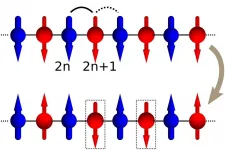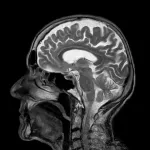(Press-News.org) Boston, Mass. - Even with more than 1.5 million Americans receiving a COVID vaccine each day, officials estimate it will take many more months before enough people are protected from the deadly virus. Until then, and potentially beyond, experts agree that opening up schools, restaurants and other public places as safely as possible will rely on widespread testing for SARS-CoV-2, the virus that causes COVID-19.
As of June 2020, the U.S. Food and Drug Administration (FDA) had granted emergency use authorization for more than 85 different viral DNA test kits -- or assays -- each with widely varying degrees of sensitivity and unknown rates of accuracy. However, with no existing gold standard test for the novel coronavirus, there's little data on which to judge these various tests' usefulness to municipalities' efforts to safely re-open for business.
A team of researchers at Beth Israel Deaconess Medical Center (BIDMC) has developed a mathematical means of assessing tests' false-negative rate. The team's methodology, which allows an apples-to-apples comparison of the various assays' clinical sensitivity, is published in the journal Clinical Infectious Diseases.
"For getting back to business as usual, we all agree we've got to massively ramp up testing to figure out who's negative and who's infectious -- but that's only going to work optimally if you can catch all the positive cases," said co-corresponding author James E. Kirby, MD, Director of the Clinical Microbiology Laboratories at BIDMC. "We found that clinical sensitivities vary widely, which has clear implications for patient care, epidemiology and the social and economic management of the ongoing pandemic."
"These results are especially important as we transition from testing mostly symptomatic individuals to more regular screening across the community," said co-corresponding author Ramy Arnaout, MD, DPhil, Associate Director of the Clinical Microbiology Laboratories at BIDMC. "How many people will be missed--the false negative rate--depends on which test is used. With our model, we are better informed to ask how likely these people are to be infectious."
COVID test results are usually reported as simply positive or negative. However, positive individuals can harbor radically different amounts of virus, or viral load, depending on how long they've been infected or how severe their symptoms are. In fact, viral load can vary as much as a hundred million-fold among individuals, said Kirby.
Using data from more than 27,000 tests for COVID-19 performed at Beth Israel Lahey Health hospital sites from March 26 to May 2, 2020, Kirby, Arnaout, and colleagues first demonstrated that viral loads can be dependably reported. "This helps distinguish potential superspreaders, at one extreme, from convalescent people, with almost no virus, and therefore low likelihood of spreading the infection," Arnaout said.
Next, the researchers estimated the clinical sensitivity and the false-negative rate first for the in-house test -- which was among the first to be implemented nationwide and considered among the best in class. Analyzing repeat test results for the nearly 5,000 patients who tested positive allowed the researchers to determine that the in-house test provided a false negative in about 10 percent of cases, giving the assay a clinical sensitivity of about 90 percent.
To estimate the accuracy of other assays, the team based their calculations on each tests' limit of detection, or LoD, defined as the smallest amount of viral DNA detectable that a test will catch 95 percent or more of the time.
Arnaout, Kirby, and colleagues demonstrated that the limit of detection can be used as a proxy to estimate a given assay's clinical sensitivity. By the team's calculations, an assay with a limit of detection of 1,000 copies viral DNA per mL is expected to detect just 75 percent of patients with COVID-19, providing one out of every four people with a false-negative. The team also showed that one test available today misses as many as one in three infected individuals, while another may miss up to 60 percent of positive cases.
While not every COVID positive patient missed by sensitive PCR and antigen detection tests will be infectious to others, some will, the researchers note.
"These misses will undermine public health efforts and put patients and their contacts at risk," said Arnaout. "This must give us pause, and we really need to benchmark each new test even in our rush to increase testing capacity to understand how well they support our testing goals."
INFORMATION:
Co-authors included Rose A. Lee, Christina F. Yen, Kenneth P. Smith, Cody Callahan, Ghee Rye Lee, and Rohit Arora, all of BIDMC.
This work was supported in part by a grant from the National Institute of Allergy and Infectious Diseases, NIH (F32 AI124590). Dr. Arnaout is principal investigator on clinical study sponsored by Abbott molecular, MitoLab, and E25Bio, unrelated to the current work. All other authors report no potential conflicts of interest.
About Beth Israel Deaconess Medical Center
Beth Israel Deaconess Medical Center is a patient care, teaching and research affiliate of Harvard Medical School and consistently ranks as a national leader among independent hospitals in National Institutes of Health funding.
BIDMC is the official hospital of the Boston Red Sox. For more information, visit http://www.bidmc.org.
Beth Israel Deaconess Medical Center is a part of Beth Israel Lahey Health, a health care system that brings together academic medical centers and teaching hospitals, community and specialty hospitals, more than 4,000 physicians and 35,000 employees in a shared mission to expand access to great care and advance the science and practice of medicine through groundbreaking research and education.
A paper recently published in the scientific journal Stem Cells and Development shares an important advancement in conservation -- one that may make the difference between survival and extinction for wildlife species that have been reduced to very small population sizes. Using fibroblast cells that have been preserved in San Diego Zoo Global's Frozen Zoo®, scientists have been able to generate induced pluripotent stem cells of northern and southern white rhinoceroses. This important breakthrough is the first step in a complex process for generating gametes from deceased and non-reproductive individuals of these two subspecies.
"For the northern white rhino, which is functionally extinct, the only hope for survival may be in the ...
ITHACA, N.Y. - Cornell University scientists have identified a new contender when it comes to quantum materials for computing and low-temperature electronics.
Using nitride-based materials, the researchers created a material structure that simultaneously exhibits superconductivity - in which electrical resistance vanishes completely - and the quantum Hall effect, which produces resistance with extreme precision when a magnetic field is applied.
"This is a beautiful marriage of the two things we know, at the microscale, that give electrons the most startling ...
LOS ALAMOS, N.M., Feb. 22, 2021--A team of quantum theorists seeking to cure a basic problem with quantum annealing computers--they have to run at a relatively slow pace to operate properly--found something intriguing instead. While probing how quantum annealers perform when operated faster than desired, the team unexpectedly discovered a new effect that may account for the imbalanced distribution of matter and antimatter in the universe and a novel approach to separating isotopes.
"Although our discovery did not the cure the annealing time restriction, it brought a class of new physics problems that can now be studied with quantum annealers without requiring they be too slow," said Nikolai Sinitsyn, a theoretical physicist at Los Alamos National ...
HOUSTON - (Feb. 22, 2021) - Governments with strong female representation are more likely to deliver on campaign promises, according to new research from Rice University.
"The Effects of Women's Descriptive Representation on Government Behavior" by author Jonathan Homola, an assistant professor of political science at Rice, examines campaign promises and subsequent policymaking by parties in power in 10 European countries, the United States and Canada along with data on women in party leadership and elected offices.
The study also showed that promises are even more likely to be kept when women in government assume leadership roles.
Homola said the research demonstrates the importance of women playing part in the ...
Researchers at the Center for Advanced Bioenergy and Bioproducts Innovation (CABBI) found that transitioning land enrolled in the Conservation Reserve Program (CRP) to bioenergy agriculture can be advantageous for American landowners, the government, and the environment.
Land enrolled in the CRP cannot currently be used for bioenergy crop production, wherein high-yielding plants (like miscanthus and switchgrass) are harvested for conversion into marketable bioproducts that displace fossil fuel- and coal-based energy. Established by the U.S. Department of Agriculture in 1985, the CRP incentivizes landowners to retire environmentally ...
A new study by an international team of researchers found that adults with Down syndrome are more likely to die from COVID-19 than the general population, supporting the need to prioritize vaccinating people with the genetic disorder.
Investigators found that adults with Down syndrome were roughly three times more likely to die from COVID-19 than the general population. This increased risk was especially apparent in from fifth decade of life: A 40-year-old with Down syndrome had a similar risk of dying from COVID-19 as someone 30 years older in the general population.
The study was published this week in The Lancet's ...
Strokes are a leading cause of poor quality of life or even death in Japan and the world over. Since its characterization, several researchers have been working tooth and nail to identify drug-accessible and effective therapeutic targets for this debilitating condition. One such region of interest for drug targets is the blood-brain barrier (BBB).
The BBB is a structure located around the brain, which prevents the entry of unnecessary circulating cells and biomolecules into the brain. The blood vessels in the BBB are coated with a distinct and protective layer of sugar, called the endothelial glycocalyx, which prevents their entry. However, in the event of a stroke, which results in the blockage or severance of blood vessels in the brain, studies have shown that this ...
Skoltech researchers have designed a software-based algorithm for synchronizing time across smartphones that can be used in practical tasks requiring simultaneous measurements. This algorithm can essentially help turn several devices into a full-fledged network of sensors. The paper was published in the journal Sensors.
If you want a network of intelligent devices - say, an array of cameras capturing a dynamic scene or another kind of network of sensors - to work properly, one of the fundamental tasks you have to solve is clock synchronization: all devices should have the same timeline, often up to sub-millisecond for the more challenging tasks. Modern smartphones can easily be used as multipurpose ...
Female physicians have better patient outcomes compared with their male peers, while female patients are less likely to receive guideline-recommended care when treated by a male physician, according to a systematic review from the American College of Cardiology's Cardiovascular Disease in Women section published today in the Journal of the American College of Cardiology.
While women make up over 50% of internal medicine residents, only 12.6% of cardiologists are female. A dedicated effort to increase diversity in the cardiovascular field could help to lower implicit bias, often considered an important factor in health care disparities.
In a detailed systematic review, researchers looked at 13 studies ...
A new study from UCLA and Stanford University researchers finds that three-dimensional human stem cell-derived organoids can mature in a manner that is strikingly similar to human brain development.
For the new study, published in Nature Neuroscience February 22, senior authors Dr. Daniel Geschwind of UCLA and Dr. Sergiu Pasca of Stanford University conducted extensive genetic analysis of organoids that had been grown for up to 20 months in a lab dish. They found that these 3D organoids follow an internal clock that guides their maturation in sync with the timeline of human development.
"This is novel -- Until now, nobody has grown and characterized these organoids for this amount ...



